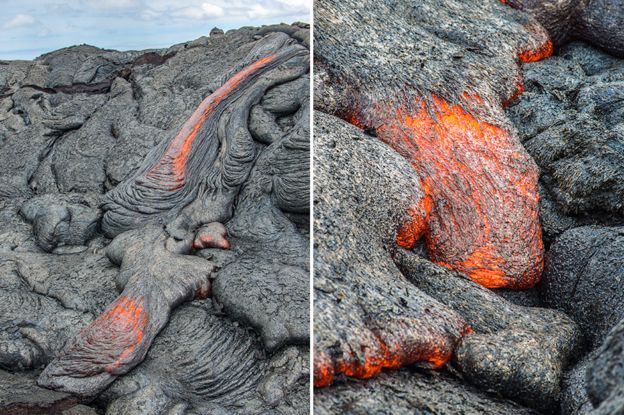
Scientists have made an astonishing discovery during experiments on mud in the laboratory.
A global team of scientists was trying to figure out how to emit mud instead of volcanic rocks on the Red Planet.
In a laboratory in the UK where an atmosphere similar to that of Mars has been created, when tested on mud, it began to move like boiled toothpaste and in some cases the fluid began to leak.
The mud resembled lava from the famous volcano Kluwaya in the US state of Hawaii. This new discovery by scientists will complicate some of the results of previous research on Mars.
Now a geologist will be able to determine whether the flowing material is mud or rock lava only after reaching Mars.
Dr. Peter Bruce of the Czech Academy of Sciences Institute of Geophysics says that now when you look at some objects from space, you will not be able to tell whether it is volcanic lava rock lava or mud flowing.
"Unless a geologist is actually on Mars and finds out with a hammer, it will be difficult to tell."
Dr. Bruce has long been skeptical of the mud flowing on Mars, and for many years he has been trying to disprove the definition of conical shapes visible on Mars.
Eventually, Dr. Bruce accepted the definition of conical shapes visible on Mars, and began to wonder what would happen if mud boiled off the surface.
With the same question, Dr Bruce approached Dr Manish Patel's team at the UK's Open University, which has a laboratory facility that could create a Mars-like environment.
The UK Open University laboratory is testing devices that are intended to be installed on the space agency's rover to Mars.
Researchers always try their best to keep their laboratory chambers clean, but during this mud experiment, the sludge began to flow down the sandy slope. The reaction of mud on Earth is similar to that of gravy on a plate, but the behavior of mud on Mars is radically different and it starts flowing like a volcanic substance.
This is due to the pressure of the atmosphere on the earth which is only one percent of the value of the earth and it evaporates the water and then it freezes after boiling. The outer layer of this fluid freezes, but the fluid remains in its form inside.
Dr. Patel says that the outer surface freezes but the fluid inside it comes out from any weak spot and starts flowing. Dr. Patel says that it is like undulating waves up and down and the only difference is that it contains molten mud instead of molten rock.
The team of scientists described the results of their initial experiments in the scientific journal Nature Geoscience. But later experiments have not yet been reported in Nature Geoscience. In these experiments, in a low-pressure environment, the mud boiled very fast and bounced on the surface as if it were floating in the air.
Dr. Bruce says scientists need to understand that when they look at physical factors on planets, they sometimes come up with unexpected results.
Now a geologist will be able to find out whether the flowing material is mud or rock lava only after reaching Mars.
















0 Comments